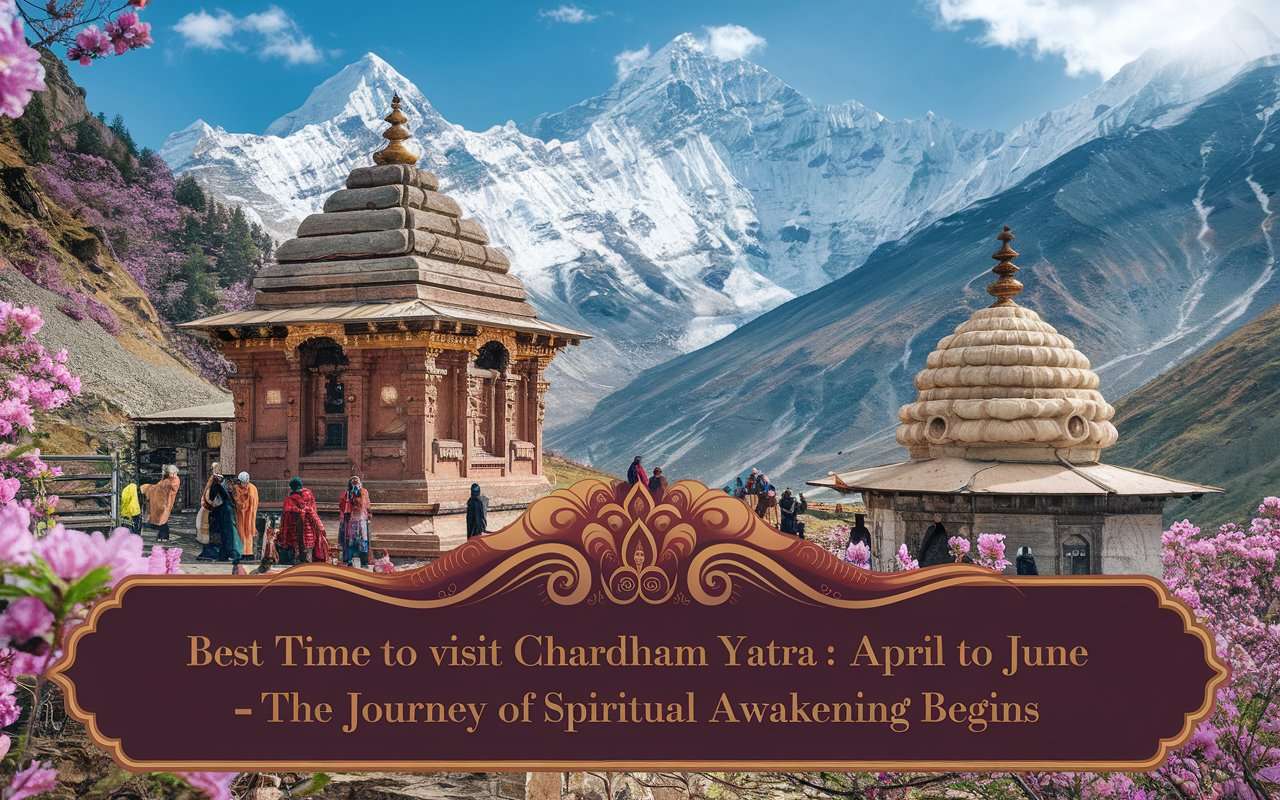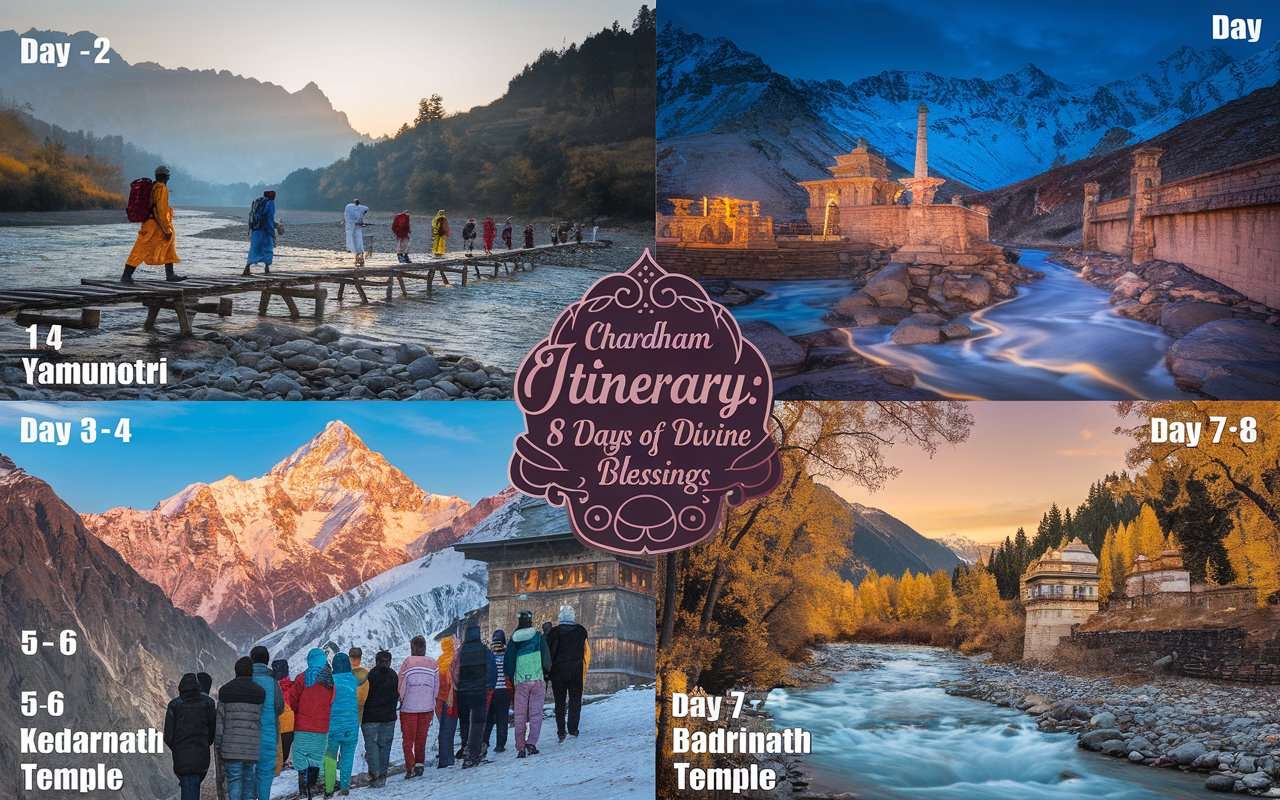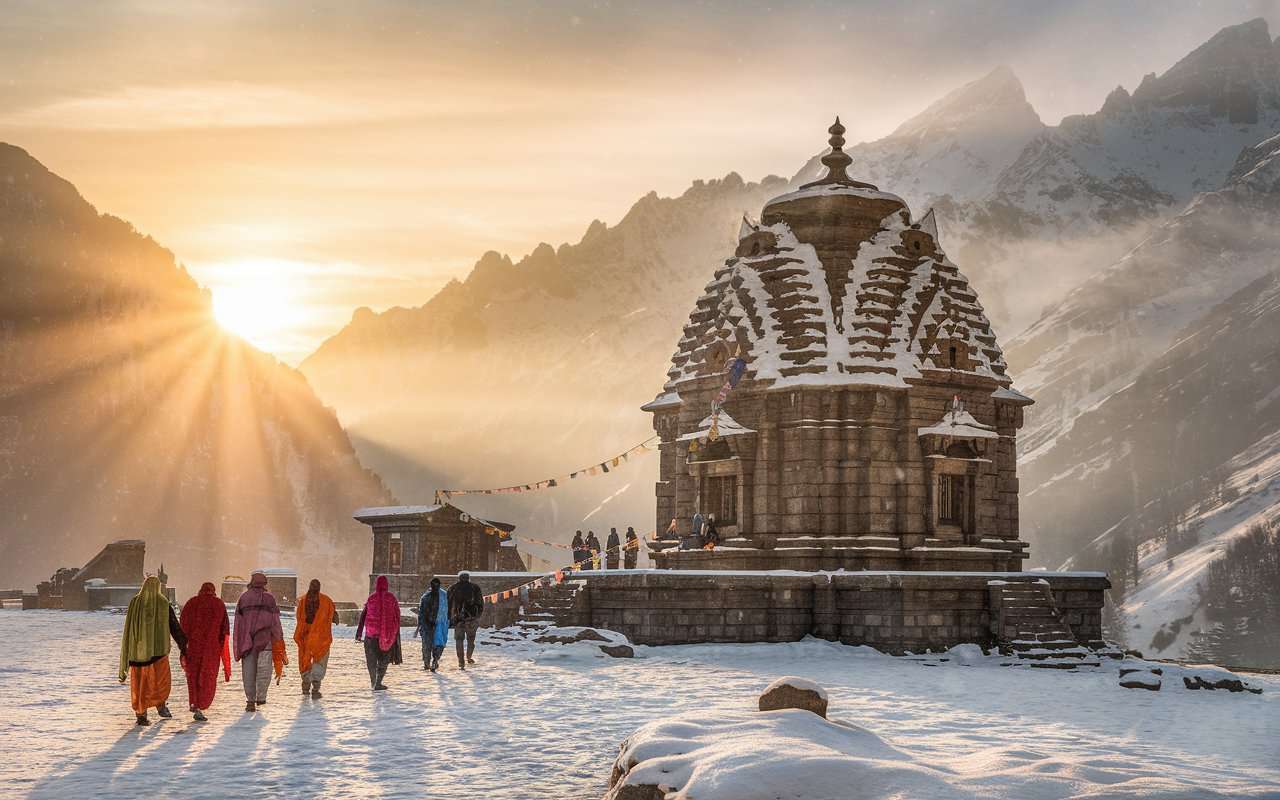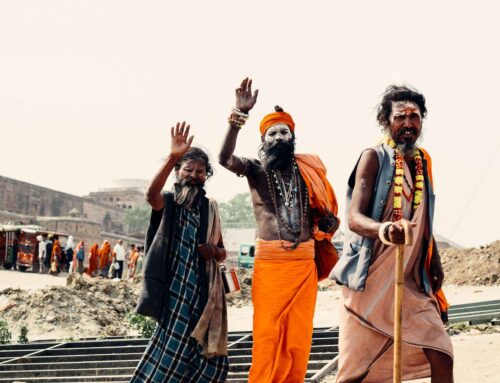Chardham Yatra: The Ultimate Travel Guide (2025)
Contents
- 1 Chardham Yatra: The Ultimate Travel Guide (2025)
- 1.1 Introduction
- 1.2 What is Chardham Yatra?
- 1.3 Best Time to Visit Chardham Yatra
- 1.4 Chardham Yatra Itinerary
- 1.5 FAQs about Chardham Yatra
- 1.5.1 1. How many days are required for Chardham Yatra?
- 1.5.2 2. Is Chardham Yatra difficult for beginners?
- 1.5.3 3. Can senior citizens undertake Chardham Yatra?
- 1.5.4 4. What is the best time to visit Chardham Yatra?
- 1.5.5 5. Are there medical facilities available during Chardham Yatra?
- 1.5.6 6. What are the accommodation options during the Yatra?
- 1.5.7 7. Can I book Chardham Yatra from the USA?
- 1.5.8 8. What should I pack for Chardham Yatra?
- 1.5.9 9. Are mobile networks available in Chardham Yatra?
- 1.5.10 10. Is Chardham Yatra available throughout the year?
Introduction
Chardham Yatra is one of the most sacred pilgrimages in Hinduism, covering four holy shrines in Uttarakhand, India: Yamunotri, Gangotri, Kedarnath, and Badrinath. It is believed that undertaking this Yatra washes away sins and paves the way to salvation (Moksha). This blog serves as a complete travel guide for Chardham Yatra 2025, covering everything from itinerary, route map, best time to visit, costs, and travel tips. Whether you are planning to visit from India, the USA, or as an NRI traveler, this guide will ensure you have all the essential details.
Image Size: 1200×700
What is Chardham Yatra?
Chardham Yatra refers to the four sacred pilgrimage sites nestled in the Himalayas:
- Yamunotri Temple (Dedicated to Goddess Yamuna)
- Gangotri Temple (Dedicated to Goddess Ganga)
- Kedarnath Temple (One of the 12 Jyotirlingas of Lord Shiva)
- Badrinath Temple (Dedicated to Lord Vishnu)
History and Significance
Chardham Yatra has been a significant pilgrimage for Hindus for centuries. The belief behind the pilgrimage is deeply rooted in Hindu mythology, where it is said that visiting these four holy shrines cleanses one’s soul, removes past sins, and leads to salvation. The journey was systematized by Adi Shankaracharya in the 8th century, who emphasized the importance of these four sites in the spiritual path of Hinduism. Each of these temples is connected to an important Hindu deity, making the Yatra an essential part of religious traditions in India.
Yamunotri is considered the origin of the Yamuna River, which is one of the most revered rivers in Hinduism. Devotees believe that bathing in its waters purifies their souls. Gangotri, on the other hand, is the birthplace of the Ganges River, the holiest river in India. The temple here marks the location where King Bhagirath is said to have brought the sacred river from heaven to earth.
Kedarnath is home to one of the twelve Jyotirlingas, making it one of the most significant Shiva temples. It is believed that Lord Shiva took refuge here in the form of a bull after the Kurukshetra war. Finally, Badrinath is associated with Lord Vishnu, where he is worshipped in his meditative form. It is believed that Adi Shankaracharya attained enlightenment here.
The journey to these shrines is not only spiritually uplifting but also offers breathtaking views of the Himalayan landscapes, making it a physically rewarding experience as well.
Image Size: 1200×700
Best Time to Visit Chardham Yatra

Choosing the right time to visit Chardham is essential for a smooth and comfortable pilgrimage. The Yatra remains open for a limited period each year due to extreme weather conditions in the Himalayan region.
Recommended Months:
- Summer (April to June) – This is the peak season for the Yatra. The weather is pleasant, with temperatures ranging from 10°C to 25°C. Most pilgrims prefer this season because all roads remain accessible, and the temples are fully functional.
- Autumn (September to October) – The second-best time to undertake the journey. The monsoons recede by this time, leaving the surroundings lush green and the air fresh. The skies remain clear, providing mesmerizing views of the Himalayan peaks.
Avoid Traveling in:
- Monsoon Season (July-August) – Heavy rains cause landslides, making travel extremely dangerous. Many routes become impassable, and sudden road closures are common. If traveling during this time, it is advisable to stay updated with weather reports.
- Winter (November-March) – Harsh cold weather and heavy snowfall force the closure of the temples. The roads become inaccessible, and it is nearly impossible to complete the Yatra during these months. However, devotees can still visit the winter abodes of the deities.
Planning your journey in the recommended months ensures a safe and fulfilling pilgrimage without unexpected challenges.
Image Size: 1200×700
Chardham Yatra Itinerary

A well-planned itinerary is crucial for making the most of your pilgrimage. Here’s a detailed breakdown of the journey, including travel times and necessary preparations.
Day 1: Haridwar to Yamunotri
- Travel Distance: 220 km (by road) + 6 km trek
- Time Taken: 8-10 hours
- Places to Visit: Yamunotri Temple, Surya Kund (hot water spring), Divya Shila
The journey begins in Haridwar or Rishikesh, from where pilgrims travel to Barkot, the gateway to Yamunotri. The trek to the Yamunotri Temple starts from Janki Chatti (6 km trek). Ponies and palanquins are available for those unable to walk. After offering prayers, devotees can take a holy dip in Surya Kund before returning to Barkot for an overnight stay.
Day 2: Yamunotri to Gangotri
- Travel Distance: 230 km (by road)
- Time Taken: 8-9 hours
- Places to Visit: Gangotri Temple, Bhagirath Shila, Ganga Aarti
The next morning, travelers head towards Gangotri. This temple, located at an altitude of 3,100 meters, marks the origin of the Ganga River. Pilgrims take a dip in the Bhagirathi River, visit Bhagirath Shila, and attend the evening Ganga Aarti.
Day 3: Gangotri to Kedarnath
- Travel Distance: 380 km (by road) + 18 km trek
- Time Taken: 10-12 hours
- Places to Visit: Kedarnath Temple, Bhairav Mandir, Vasuki Tal
The Kedarnath journey begins with a drive to Gaurikund, from where an 18 km trek starts. Pilgrims can opt for helicopter services for a faster and easier journey. Kedarnath Temple, one of the twelve Jyotirlingas, is a sacred shrine dedicated to Lord Shiva. An overnight stay is usually planned in Kedarnath.
Day 4: Kedarnath to Badrinath
- Travel Distance: 220 km (by road)
- Time Taken: 8-9 hours
- Places to Visit: Badrinath Temple, Mana Village, Tapt Kund
After offering prayers at Kedarnath, pilgrims proceed to Badrinath, the final destination. The Badrinath Temple is dedicated to Lord Vishnu and is considered one of the most important Vaishnavite shrines.
Day 5: Badrinath to Rishikesh
- Travel Distance: 320 km (by road)
- Time Taken: 10-12 hours
After visiting Badrinath Temple and exploring the nearby sites like Mana Village and Tapt Kund, pilgrims return to Rishikesh or Haridwar, marking the end of their spiritual journey.
FAQs about Chardham Yatra
1. How many days are required for Chardham Yatra?
The complete Chardham Yatra typically takes around 10 to 12 days, depending on travel arrangements and weather conditions.
2. Is Chardham Yatra difficult for beginners?
The journey can be physically demanding, especially the Kedarnath trek (18 km). However, helicopter services and ponies are available for assistance.
3. Can senior citizens undertake Chardham Yatra?
Yes, senior citizens can complete the Yatra, but it is advisable to opt for helicopter services and avoid extreme weather conditions.
4. What is the best time to visit Chardham Yatra?
The best time to visit is April to June and September to October, as these months have pleasant weather and safe travel conditions.
5. Are there medical facilities available during Chardham Yatra?
Yes, basic medical facilities are available along the route. However, it is advisable to carry essential medications and consult a doctor before travel.
6. What are the accommodation options during the Yatra?
Accommodations range from budget guesthouses and dharamshalas to luxury hotels in certain locations. Booking in advance is recommended.
7. Can I book Chardham Yatra from the USA?
Yes, many travel agencies offer online booking options for NRIs and international travelers planning their Chardham Yatra.
8. What should I pack for Chardham Yatra?
Essential items include warm clothing, rain gear, trekking shoes, first aid, and dry snacks. Oxygen cylinders can also be useful for high-altitude locations.
9. Are mobile networks available in Chardham Yatra?
Mobile networks work in some locations, but connectivity can be limited in high-altitude areas like Kedarnath.
10. Is Chardham Yatra available throughout the year?
No, the Yatra is only open from April to October. Temples remain closed in winter due to heavy snowfall.

























